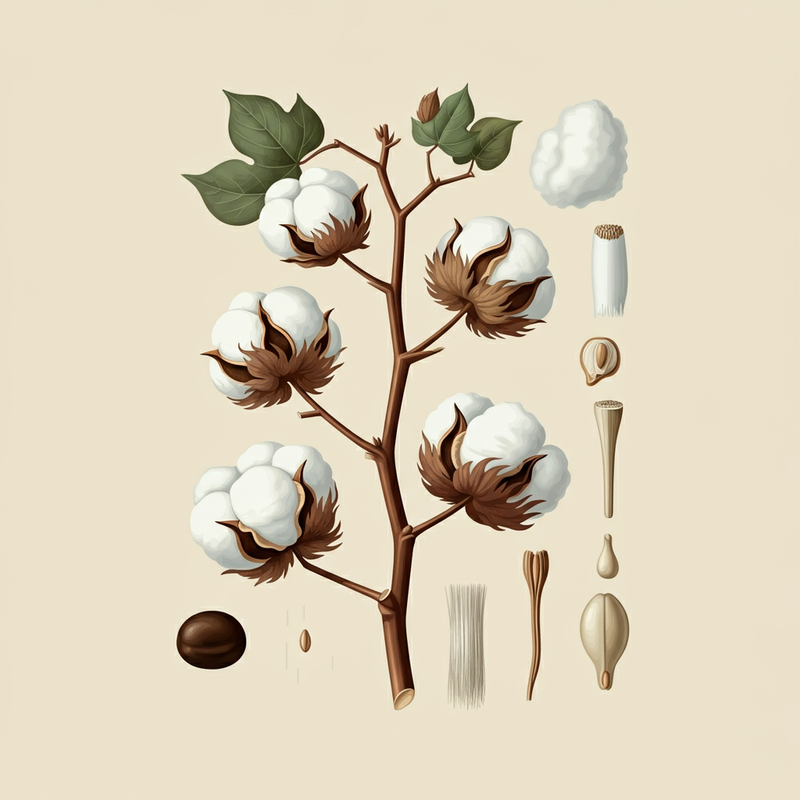Discover Cottonseed Linters Insights on ScienceDirect

Coloured cotton is particularly popular among the environmentally conscious individuals who request items that minimise chemicals and dyes.
The largest manufacturing marketplace within the Mughal Empire was cotton textile production, which provided the production of piece products, calicos, and muslins, out there unbleached and in many different colours. The cotton textile sector was to blame for a sizable Component of the empire's international trade.
With all the drive for reducing plastic squander, cotton linters have emerged as being a worthwhile useful resource during the production of biodegradable plastics. The cellulose extracted from cotton linters may be transformed into bioplastics, which decompose far more easily than traditional plastics.
Noting its similarities to wool, men and women in the area could only envision that cotton needs to be made by plant-borne sheep. John Mandeville, writing in 1350, mentioned as fact that "There grew there [India] a wonderful tree which bore small lambs to the endes of its branches. These branches were being so pliable which they bent all the way down to enable the lambs to feed when they're hungry." (See Vegetable Lamb of Tartary.)
Cotton becoming picked by hand in India, 2005 Most cotton in The us, Europe and Australia is harvested mechanically, possibly by a cotton picker, a machine that eliminates the cotton from the boll with no detrimental the cotton plant, or by a cotton stripper, which strips the entire boll from the plant.
Offloading freshly harvested cotton right into a module builder in Texas; Earlier designed modules is often viewed while in the qualifications
The concluded products is distributed again to India at European shipping premiums, once again on British ships. The captains, officers, sailors of these ships, whose wages has to be paid out, are English. The only Indians who income undoubtedly are a handful of lascars who do the dirty work on the boats for any handful of cents a day.
[40] The creation of cotton, which may have mostly been spun inside the villages and after that taken to cities in the shape of yarn for being woven into fabric textiles, was advanced by the diffusion with the spinning wheel across India Soon ahead of the Mughal era, reducing The prices of yarn and supporting to improve need for cotton. The diffusion from the spinning wheel, and also the incorporation of your worm equipment and crank take care of into the roller cotton gin, resulted in drastically expanded Indian cotton textile manufacturing throughout the Mughal era.[forty one]
The different different types of cotton fabric cater to various requirements, no matter whether it's the sustainability aspect of organic and natural cotton, the versatility of cotton yarn, the durability of textile fibers, or the convenience supplied by extremely breathable and absorbent more info cotton fabrics.
As buyers shift toward organic and organic items, cotton linters present you with a sustainable choice to synthetic fibers, aligning with the thoroughly clean natural beauty trend.
Controls and quarantines of influenced spots have helped limit the spread from the insect, and eradication has actually been attainable in several fairly tiny parts with sufficiently demanding controls. The bollworm (
Cotton fibers, with their exceptional hollow structure and twists, present power and durability. Furthermore, the size of cotton fibers plays a vital function in figuring out the caliber of the fabric generated.
Study into making use of cotton linters to be a feedstock for biofuels is attaining momentum, especially in areas where cotton production is abundant.
Cotton's absorbency and breathability Qualities allow it to soak up drinking water, wick absent moisture, and control human body temperature successfully.